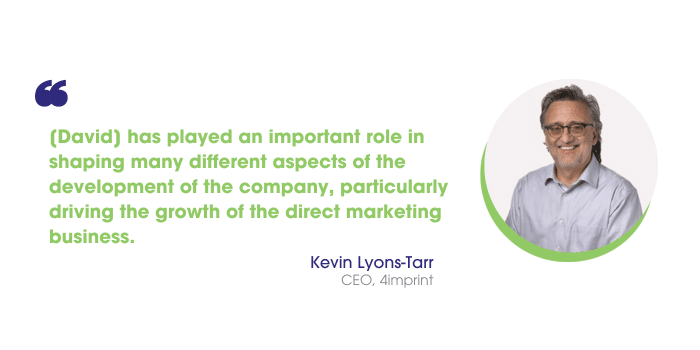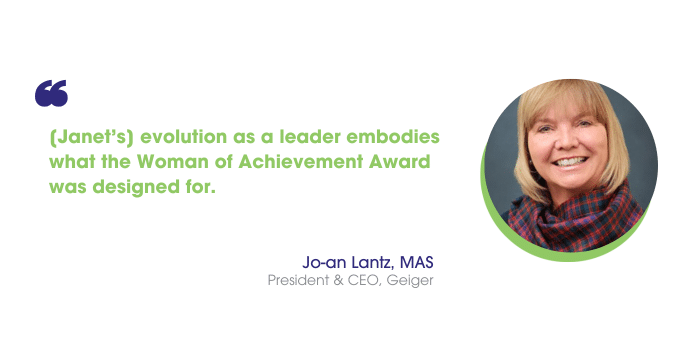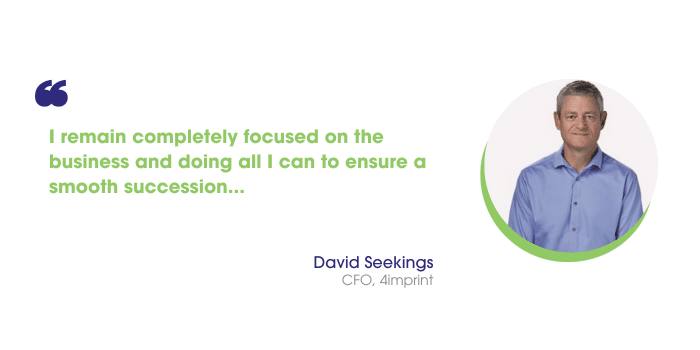Although inflation is finally cooling off, the Federal Reserve isn’t expected to cut its federal funds target rate – which has remained at 5.25% to 5.5% since last summer – until later this year. The rate sets a benchmark for other interest rates, such as credit cards, mortgages and auto loans, and between March 2022 and July 2023, the Fed hiked it 11 times.
Reduced rates will come as a relief to both consumers and business owners, including David and Ben Grossman, co-presidents of Woburn, Massachusetts-based Grossman Marketing Group (PPAI 281988, Standard-Plus).
At any given point, the company finances several million dollars’ worth of inventory for its clients. “For large enterprise clients like Fortune 500 businesses, when they go on a website to place an order, they expect the service that they get on Amazon, where it ships and they get it in a couple of days,” Ben Grossman says.

“So, that’s what we try to do. We inventory those items, run our own warehouses and orders that are placed today are shipped today. If we make a mistake and purchase something that we shouldn’t have, then, of course, we’re responsible for that. It hasn’t been too much of a problem for us as long as we communicate. You have to communicate and be transparent. If you hide something, that’s generally where problems arise.”
When their cash needs fluctuate, the brothers have the option to draw on a line of credit from their banking partner.
- Since 2022, the interest rate that they pay on the debt has nearly doubled from 4% to roughly 8%.
As a result of the rate increase, they’ve been a lot more disciplined about how they finance inventory. “When interest rates were lower and the cost of money was less, we got a little lax,” Grossman says. “We try not to micromanage our account managers and instead give them guidelines in terms of our expectations of inventory and the best practices to manage these programs.”
Tightening The Budget
The firm’s account managers were reined in after an eye-opening situation regarding a large enterprise program.
After winning the bid, Grossman Marketing Group inherited inventory from another distributor, but didn’t have much data to base the inventory purchases on. As a result, the team ordered more than they should’ve.
“When the cost of credit was at 4%, it wasn’t that big of an issue,” Grossman says. “But when the cost of credit rose close to 8%, we decided to lay out much more clearly our set of expectations and a process that needed to be followed to ensure that we weren’t overstocking inventory.”
The new process consists of inventory requests going directly to one of the Grossman brothers, as well as the chief financial officer, for written approval or feedback.
- Grossman says the company won’t purchase more than 90 days’ worth of inventory for a specific item.
By enforcing stricter inventory replenishment rules, the company has cut the inventory of that particular program in half, resulting in a several hundred-thousand-dollar positive cash flow swing to the business.
“In the event that clients rebrand or move to another vendor, they’re responsible for purchasing the excess inventory,” Grossman says. “We’re not taking any inventory risk, but we’re incurring the cost to finance inventory and allocate space, which costs money from a real estate perspective for heat, light, power and labor. So, there’s a true cost to finance the inventory, but it helps us get the best branded merchandise out in the field for our large enterprise clients.”
Mutually Beneficial Relationships
Higher interest rates have driven distributors, especially those with program business, to place more frequent orders with their supplier partners, such as Tonawanda, New York-based AZX Sport.
“As a result, we’ve made large investments in domestic production capacity and inventory, so they can rely on us to have the stock and deliver exactly when they need it,” says Rob Kerton, president of AZX Sport. “Plus, with domestic production and more frequent, smaller orders, distributors are avoiding having to stretch vendors by reducing the need for inventory.”

“We’ve received great feedback from our customers,” Kerton says, “because they prefer working with our service teams, which have a significant human element, as opposed to automated messages. We’ve also taken significant steps to increase our customer service team to accommodate this.”
Grossman adds that while their competitors may stretch vendors to increase cash flow, they refuse. “We treat our supplier partners like they’re our clients,” he says. “We pay in terms, generally quicker than the terms, because we know they’ll show us respect and bend over backward to help us in critical situations.”
Innovative Solution
Grossman credits his brother for coming up with a creative workaround to another potential inventory issue.
After going through an RFP process and being awarded the business of a very large client, Grossman Marketing Group was finalizing a multi-year agreement when the client mentioned that it was buying out inventory from a previous vendor at an agreed upon rate and expecting Grossman to handle some of the inventory at cost.
“We had never been asked that before,” Grossman says, “so we modeled out what the cost would be for financing, warehousing, pick and pack and administrative versus what we felt was the value of an additional year of the contract. Our model indicated that another year of the contract far outweighed the cost to handle some of that inventory at cost.”

The client agreed to the unique proposal, which allowed Grossman Marketing Group to make additional IT and HR investments to support the client and removed the risk of having significantly increased prices in the field, which the client felt like wouldn’t reflect well on its procurement division.
“Sometimes, in the heat of the moment, we forget that we need to create win-win situations for our clients,” Grossman says. “At the end of the day, our job in sales is to make our clients look good to their managers, customers, donors or investors. We have to articulate how it’s a win-win for both sides because then it arms them with key data points to bring back to their internal stakeholders.”


